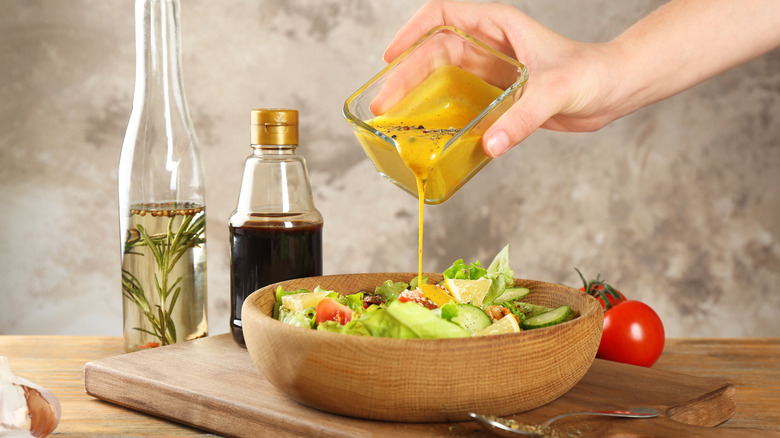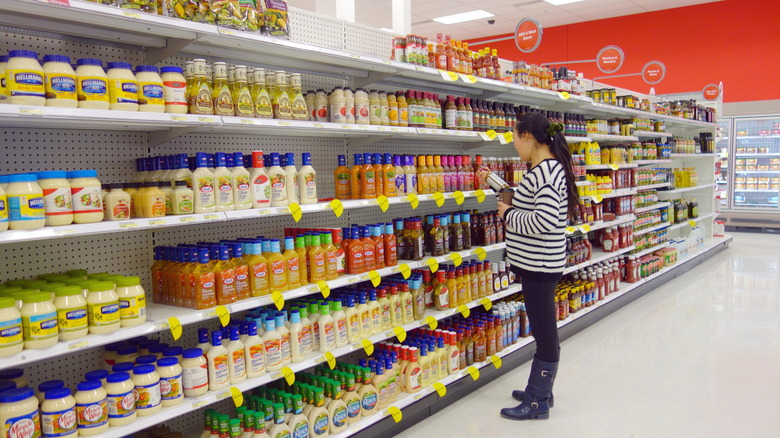Ingredients You Don't Want To See In Your Salad Dressing
Salads are a great way to add more vegetables to your diet. Many people enjoy adding dressing to their salads to add flavor and moisture. But while some dressings are fine, others are loaded with sugar and fat. Here are some ingredients to avoid when selecting your next salad dressing.
According to Taste of Home, salad dressings are typically oil-based or cream-based. Products that use balsamic vinegar or olive oil are usually the healthier options. Salad dressings that are marketed as "creamy" often use ingredients like mayonnaise, heavy cream, or sour cream to get their desired flavor and texture. This includes popular dressings like ranch, Caesar, and Thousand Island.
The exception to unhealthy cream-based salad dressings are those that use substitutes like Greek yogurt to get that creamy effect. Litehouse's OPA Greek Yogurt Strawberry Poppyseed Dressing, for example, uses yogurt as its base, adding a pop of sweetness to your salad without too many calories (only 60 in two tablespoons). Honey mustard dressings, like Annie's Organic Honey Mustard Vinaigrette, feel like a creamy dressing but are mustard-based. This adds a small number of calories and fat while still adding a ton of flavor.
Always read the nutrition label before buying salad dressing
The word "creamy" isn't the only thing to look out for when selecting a salad dressing. Many brands add sodium to increase the flavor of the condiment. Girard's Light Champagne Dressing, for example, contains almost 25 percent of your daily sodium intake in a single serving (via Eat This, Not That!).
Added sugar is another ingredient to avoid in your salad dressings. According to Eat This, Not That!, Marzetti Sweet and Sour Fat Free dressing has 10 grams of added sugar (in the form of high fructose corn syrup) per serving. Color dyes are also common in salad dressings. Avoid ingredients like Red 40, which has been linked to cancer, and Yellow 5, which has been linked to hyperactivity in children.
According to Healthline, making your own salad dressing at home is an easy way to ensure you have a healthy condiment without any unhealthy ingredients. You can make a simple balsamic vinaigrette by combining balsamic vinegar, Dijon mustard, garlic, and olive oil. If you prefer creamy dressings, make a better-for-you version by mixing avocado, plain Greek yogurt, cilantro, lime juice, garlic, and olive oil in a food processor until smooth.


